Genre: Shmup Developer: Sega of Japan Publisher: Sega of Japan Players: 1 Released: 1990
Darwin 4081 is a port of Data East’s arcade title Super Real Darwin, which in turn is the sequel to Darwin 4078. The name change was supposed to include the Mega Drive version in a series that eventually fell into the realm of the obscure. Despite its lack of punch and the somewhat generic graphical style, Darwin 4081 shouldn’t be taken as a failure, and if it sounds unimpressive, the arcade source is to blame. Sega did a very good job with the port, preserving the graphic quality, adjusting the difficulty, and even improving the music, which is more varied than in the arcade version. The excellence of the porting process is also hinted by an absolute lack of slowdown, something that very few 16-bit shmups were really capable of achieving (another notable Mega Drive example is Gleylancer).
Darwinism and sci-fi are actually very close to each other as a wealthy foundation for artistic creations, and this connection is what drives the gameplay in Darwin 4081, which was never released out of Japan. The ship evolves as the player collects the so-called E-evol power-ups. These items are released by specific enemies, each evolution leap comes with a new main weapon and a visible change in the ship’s sprites and the more you evolve the bigger the ship’s hit box gets. A secondary and rarer power-up called B-evol will apply a special upgrade that changes the ship into a whole new form depending on which evolution phase was originally active. Further evolution phases beyond the starting one are time-dependent, so if you do not take another E-evol in a certain amount of time your ship will devolve one phase. Getting hit while evolved will send the ship to its weakest and most basic form, and any damage in this condition (or in the +1 starting phase) means death and restart at a previous checkpoint.
Building upon the classic ideas of Xevious, basic gameplay in Darwin 4081 is comprised of a main weapon and a secondary shot that takes care of ground enemies. This ground shot does not change, what evolves is only the main firepower. Extra items consist of speed-ups (S) and one-hit shields (Ar). Just like power-ups they are always released by the same enemies, so after a while it gets easier to spot where they’re coming from. They will wander off pretty quickly, and if you’re not fast enough you’ll lose them. Actual speed is indicated to the right, and its maximum value is three. Speed-up items cease to appear once you get the third one – there’s no need to refrain from taking them because the maximum speed doesn’t feel too fast and is actually quite useful against most bosses.
Some players hate checkpoints in shooters, and even though this game falls into this category the good news is that it lets you power up instantly when you die. In order to do that you must collect DNA left from special ground enemies such as worms and lizards. Each DNA is worth 300 points and adds one evolution phase to your form as soon as you respawn after dying. If you manage to stock the maximum value of nine DNAs you’ll be boosted up to the second-to-last upgrade (the flame shot).
Explicit technical highlights aren’t to be found anywhere in this game. There are no special effects, no parallax, and no huge explosions. However, one of the levels is quite remarkable for letting you fly over a landscape full of circuit boards and microchips that come to life all of a sudden. The music is average but the sound design is a real standout, with specific sounds for each weapon and a rich set of the most varied sound effects. The game flows smoothly and keeps you on your toes without being too taxing, and with one glaring exception the stage structure is always the same. This exception is in stage six: it has just one checkpoint (die in the boss and get back to the start of the level) and comes with the hardest boss in the whole game. The only way to hit him is with ground shots, and it’s no easy task at all. In fact, this particular part of the game represents an odd peak of unbalance, especially when you consider the fact that most bosses are a joke if you reach them with full power. Sometimes they will die in less than two seconds.
Besides a justified, albeit not too severe complaint on bullet visibility, the controversial B-evol power-ups are the only other game aspect that’s capable of impairing the enjoyment of Darwin 4081. The first bad thing about them is that it’s really hard to distinguish these unwanted “offers” from the regular E-evol items, and it’s pretty common to take one by mistake. The second bad thing is that they’re mostly too awkward to use, giving the player more trouble than actually helping… Even the dragon that shows up in the start screen isn’t worth a damn, and I curse the game whenever I activate that useless spider-like form that spits bubbles. If you manage to survive with one of these crappy weapons you get sent back to the weakest regular form once its lifetime expires, not really the best way out of an already tricky situation.
Getting past all of these little annoyances isn’t really necessary to enjoy Darwin 4081. The interesting upgrade scheme with over 15 different ships/weapons makes it fun, and the fast paced action is sure to please those who always thought Xevious was too slow to begin with. The game is also very generous on the extends, which are given every time you score 50.000 points. A useful gameplay advice is to remain in the bottom of the screen when ground enemies start becoming more aggressive. They will all stop shooting once they’ve scrolled 2/3 of the screen, and that makes it easier to take them out if you’re patient enough.
Upon continuing the game is resumed at the last checkpoint, not at the start of a stage. However, the limited amount of continues won’t allow an easy access to the ending, establishing replay value by force and presenting a challenge that’s a little above average for Mega Drive shooters. Even if the aesthetics aren’t that enticing, Darwin 4081’s unique setting and gameplay are definitely worth a look.
SCORE: 6 out of 10


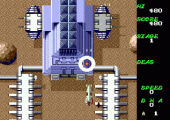
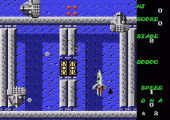
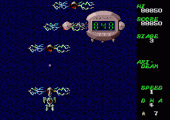
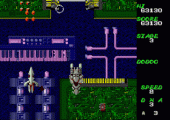
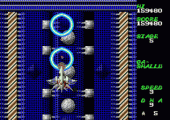
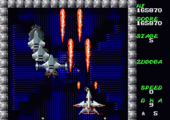
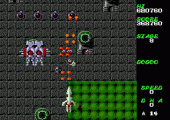
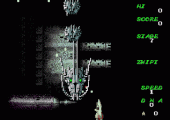
Recent Comments